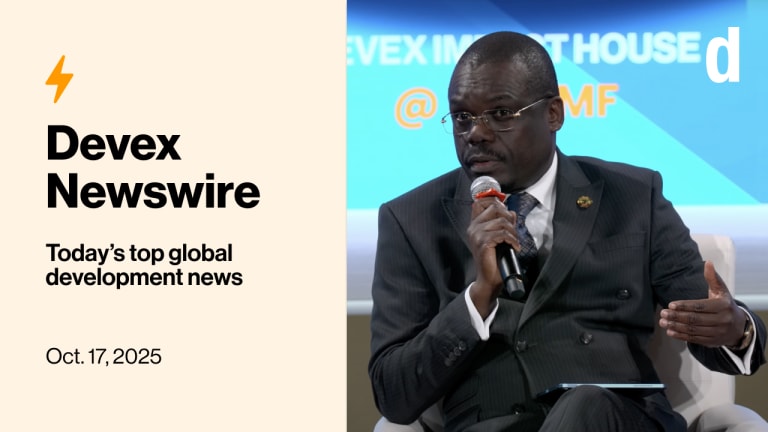
Each year, more than 660,000 children die from diarrhea, making it the second-leading cause of death among children under 5. Sarah Johnson Beebout and her team at the International Rice Research Institute are exploring a possible solution: high-zinc rice.
By increasing the amount of zinc in rice, children will be less susceptible to diarrhea, says Beebout, a soil chemist at IRRI’s crop and environmental sciences division. This will also prevent child stunting.
Beebout is one the most influential development leaders aged 40 and under in Manila.
Devex is recognizing 40 of these young trailblazers in international development. They are social entrepreneurs, government leaders, development consultants, business innovators, advocates, development researchers, nonprofit executives and journalists.
We spoke with Beebout about her research on human nutrition and views on how the aid community can better use science for development.
Can you recall the moment you realized the impact your work was making on development?
When I was visiting our collaborators in human nutrition research in Bangladesh, I met some of the patients who had been admitted to the hospital for episodes of severe diarrhea and dehydration that frequently occur during the hot, dry season. Once the infection causing the diarrhea has been treated, some of the patients are then sent to a malnutrition rehabilitation ward, and I met about 15 patients under 5 years of age who were there with their mothers, learning to eat nutritious foods to provide sufficient calories, protein and micronutrients.
One of the main underlying nutrition problems is zinc deficiency, which makes children more susceptible to diarrhea in addition to stunting normal growth and development. Our research is about increasing the amount of zinc in rice, so that these families will be able to get enough zinc through their daily diet, even if they can’t afford more nutritious foods that are naturally higher in zinc. When people have good access to high-zinc rice, there will hopefully be fewer cases of acute malnutrition and fewer patients needing hospitalization to treat diarrhea.
Your research group at IRRI has been drafting recommendations for growers on how to boost yields of more nutritious rice. How do you keep your research relevant and responsive to development needs?
It has been helpful for me to combine hands-on field experiences, which are inherently limited in scope, with the study of academically rigorous large-scale research studies and reviews.
For understanding how farmers are required to make choices based on limited real-time information, there is no substitute for getting my feet muddy in a rice paddy and hand-picking golden apple snails while they are in the act of devouring my fragile rice seedlings two hours after I transplanted them.
However, for understanding how to wisely use fertilizer, there is no substitute for a metareview of experimental results from fertilizer field trials across long periods of time and large geographical areas. It is not possible for any one researcher to collect sufficient data to get the big picture on a problem — that comes instead from looking at results from many different researchers that have studied the same problems in different environments or with different types of experiments.
Another important part of staying relevant and responsive is to interact with the private sector that provides services and supplies to farmers, as well as those who are responsible for getting the rice from the farmers to the end consumers. The private sector is generally better than the public research sector at interacting directly with farmers or consumers to understand what their needs are, because it is always part of their daily business to talk with end users, when in contrast, my daily business more frequently involves statistical analysis of experimental data than discussions with farmers.
How can the aid community better harness the sciences to accelerate development?
I think the international aid community should set aside time for the very important but rarely urgent task of finding out what others, including scientists, have done to solve similar problems. If others have already spent time thinking about these problems, you may come upon an idea which isn’t very practical, but which may spark another idea that would be more practical in your situation.
I admit that this is much easier said than done, because as scientists, we are trained to be reluctant to provide definitive answers on practical problems. Our answer always depends on something else that we don’t know about your particular situation! That is where we could really benefit from talking together — the international aid community could help us understand when a particular answer is good enough.
Read more about the Devex 40 Under 40 International Development Leaders in Manila.








